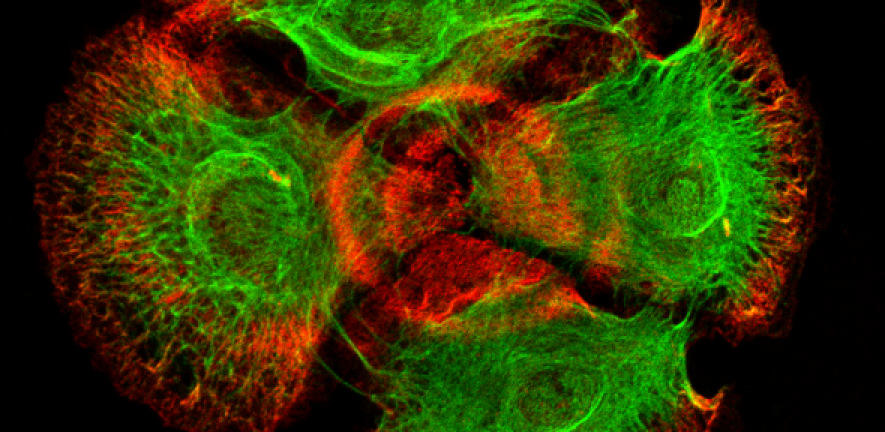
Background
Cell motility, morphogenesis, and pattern formation are essential features of cell dynamics. They involve biochemical processes and biomechanical properties coupling multiscales ranging from the intracellular level, cell surface dynamics, cell-cell and cell-tissue interactions up to the scale of cell population behaviour influencing organ formation and functioning. Hence, there is a need to develop new predictive mathematical models with the ability to handle large datasets of biological events and process thereby providing a powerful quantitative framework to understand these phenomena across multiple scales.
For example, partial differential equations (PDEs) have long served to model regulatory feedbacks and transport processes in multicellular biological systems. In recent years, there has been rapid development of geometric PDEs driven by advances in techniques in cell biology, imaging and data acquisition.
Typically, mathematical models are often continuous, involving systems of PDEs of various kinds (e.g., reaction-diffusion-transport, taxis, kinetic transport, population balance), possibly coupled to ordinary, random, or stochastic differential equations. Furthermore, the so-called agent-based approaches (e.g., cellular automata, Potts models, etc.) characterize the behaviour of populations of cells or intracellular particles in a discrete way, permitting rather detailed descriptions of motions, interactions etc. We depart from this framework and rather propose to couple mathematics with physics to study biological processes and events in cell motility and pattern formation through the development of mathematical models based on physical principles. This will necessitate the creation of new numerical and computational methods to handle such systems across multiple scales allowing the models to be used as predictive tools and avenues for intuition beyond the expected.
Aims & Objectives
This workshop aimed to highlight new mathematical and computational problems and potential solutions involved in cell motility, morphogenesis and pattern formation. It brought together scientists working on these timely and challenging topics of mathematical biology, soft matter physics, image process and analysis, cellular biology, analysis and numerics, with other key stakeholders in industry and the public sector. Additionally, it aimed to stimulate further development in the modelling of such biological phenomena, as well as strengthening synergies between mathematics, applied mathematics and the life sciences.
Applications of such mathematical modelling include, but are not restricted to:
- embryogenesis
- tumour growth and invasion
- wound healing
- tissue bioengineering
- biofilms
This Open for Business half day event was part of an Isaac Newton Institute research programme which brought together leading expertise from a wide range of disciplines such as mathematics, physics, biology and image process. Structured to enable the formation of new relationships on the business-academic interface, this workshop seeks to strengthen relationships between key stakeholders and help identify common challenges for future research and collaboration.
The afternoon finished with a facilitated discussion session, followed by a drinks reception and dinner at Christ's College.
Venue
The workshop took place at the Isaac Newton Institute for Mathematical Sciences in Cambridge. Please see the Isaac Newton Institute website for further information about the venue.

